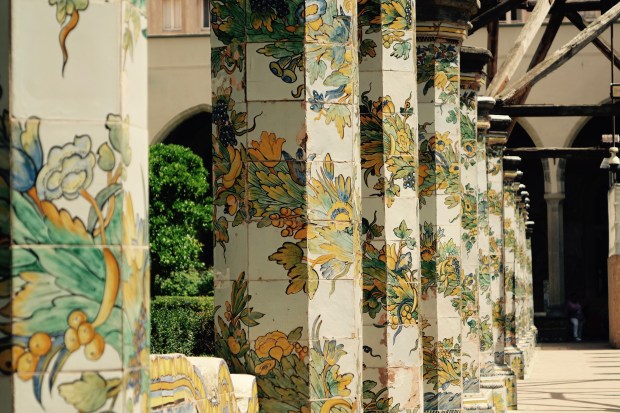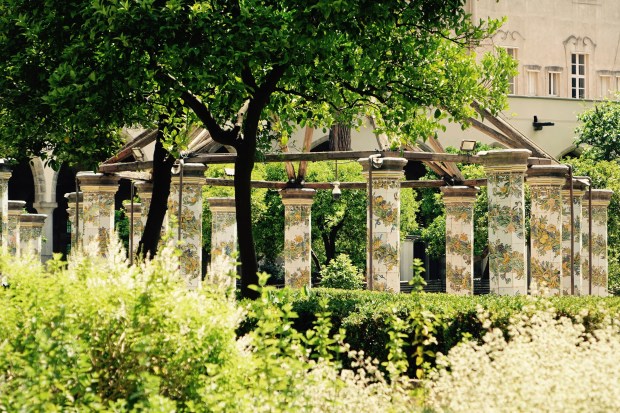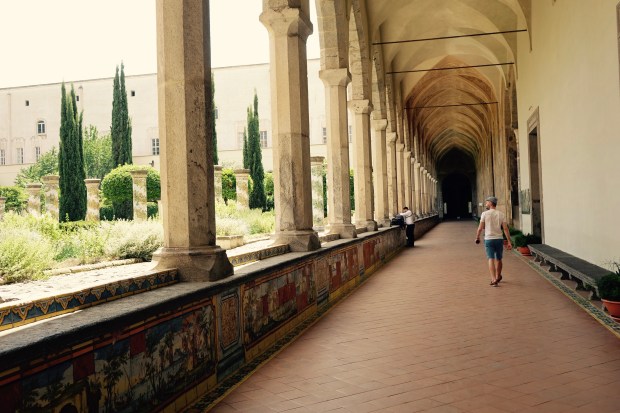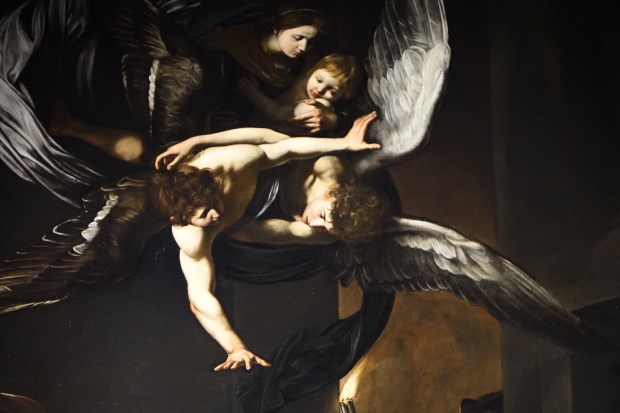From Napoli to Capri, Part 4: Catacombs, Chiara, Caravaggio

More than any other district of the city, the Spaccanapoli embodies the spirit of a city emboldened by its own insuperable energy, history and cultural superiority. In Napoli, city of dangerous extremes, crimes of passion, astonishing food and stunning geography, the Spaccanapoli feels like the ancient core of a time-battered city, like the old family grandmother ticking along besides the central hearth. It is an area whose quaint narrow streets are intermittently broken by staggering baroque palazzi; which has so many squares and churches and historical buildings that it feels like an open air museum; but whose array of shops and cafes, all overflowing with locals, demonstrates that this is no still life for the tourists: this is the living, breathing heart of a city which never stops.
But for all the life that courses through its streets, Naples is a city that is morbidly fascinated with death. Whether this obsession acts more like a memento mori – a reminder to seize the day and live to the full (which Neapolitans almost certainly do) is unclear. Whatever the reason, I have never before experienced a place quite so haunted by the ghosts of its past, and by the creepy presence of the dead.
The Catacombs of San Gaudioso










This was no more so than in the Catacombs of San Gaudioso, a dark cavernous place accessible only through a secret trap door in the Basilica of Santa Maria della Sanita. There, in the depths of this once historical burial place, the tombs of the dead were marked not only by painted images of their former selves, but by their real skulls embedded into the wall. Meanwhile, downstairs, the alcoves still remain where bodies would be propped to be drained of their liquid selves, before being buried as a decidedly reduced form.
San Gaudioso was spooky to be sure, but offered a fascinating insight into Naples’ extensive underworld. Back in the sunlight, an oozingly cheesy pumpkin and pancetta pizza in the Piazza del Gesù reinvigorated any spirits which might have been temporarily subdued in the world of the dead, and gave us nourishment and energy in sufficient doses to appreciate the magnificence of two staggering places of worship in the heart of the Spaccanapoli – the Chiesa del Gesu Nuovo, with its diamond-like facade and its staggering golden interior, and the mesmerising Cloisters of Santa Chiara.
The Chiesa del Gesu Nuovo







In Santa Chiara, in particular, we were stunned into submission by the mastery and magnificence which a garden filled with hand-painted majolica tiles embodied. Each depicting pastoral scenes, fruits and floral patterns, the overall effect was dazzling, and was to be a fitting precursor to the many beautiful majolica tiles we were to find decorating the floors of so many homes and hotels in Capri.
The Cloisters of Santa Chiara










But it was back into the gloom for the end of the day… albeit a gloom punctuated by the staggering light created by the undisputed master of light and shadow: Caravaggio. I have long wanted to see his masterpiece, The Seven Works of Mercy, in person. After all, I have traipsed across Europe admiring so much of the oeuvre of this incredible bad-boy< artist. But as is always the case with a Caravaggio painting, properly lit and embedded within the surroundings he intended, seeing this work in the Pio Monte della Misericordia was quite an experience, and once which was a fitting conclusion for this exhilarating day in the Spaccanapoli.
Caravaggio in the flesh

© Nicholas de Lacy-Brown and The Daily Norm, 2019. Unauthorised use and/or duplication of the material, whether written work, photography or artwork, included within The Daily Norm without express and written permission from The Daily Norm’s author and/or owner is strictly prohibited.







































Trackbacks & Pingbacks